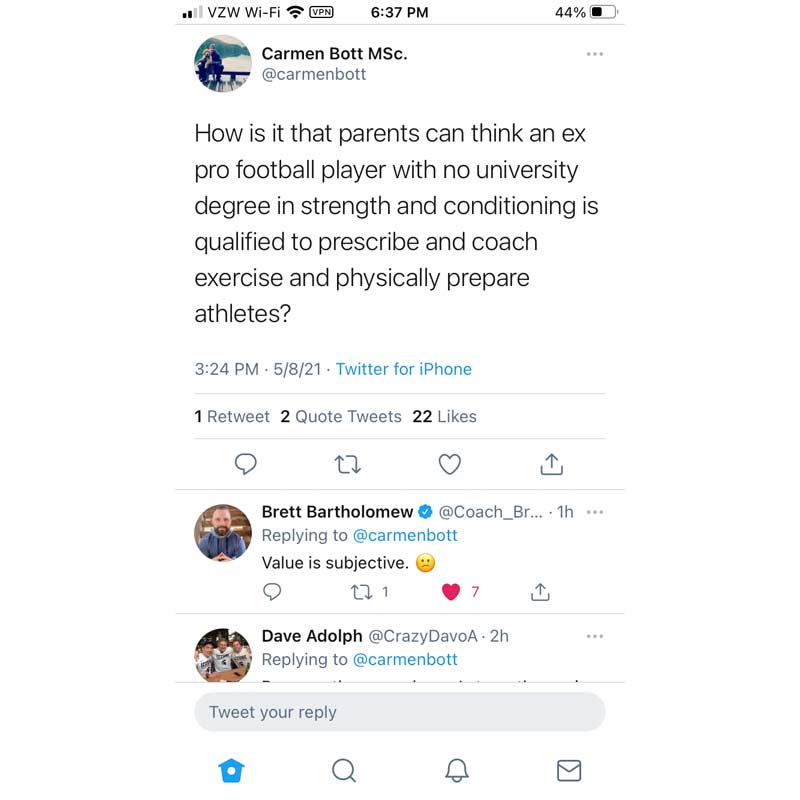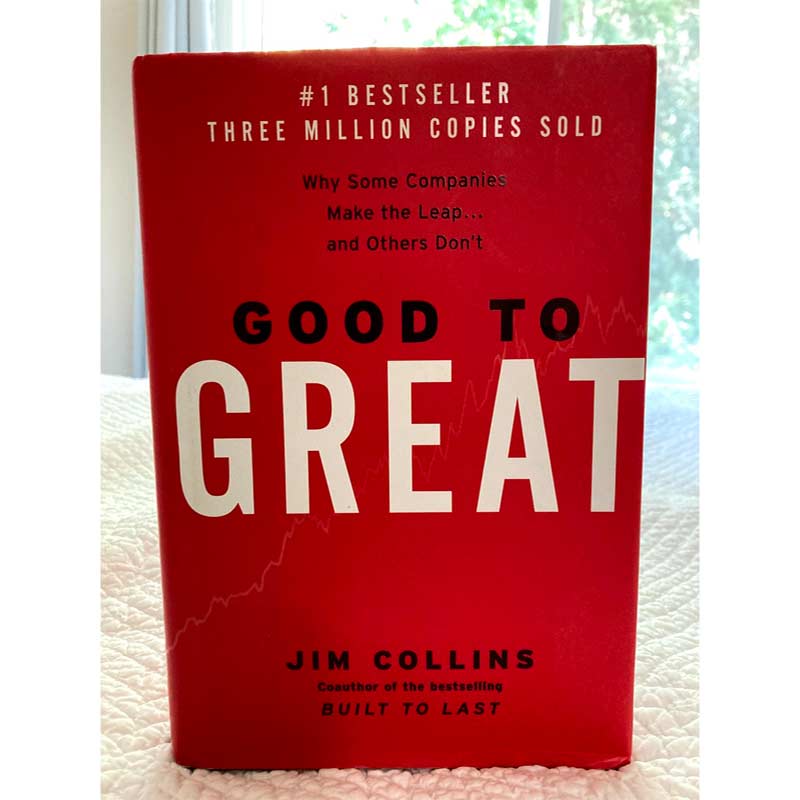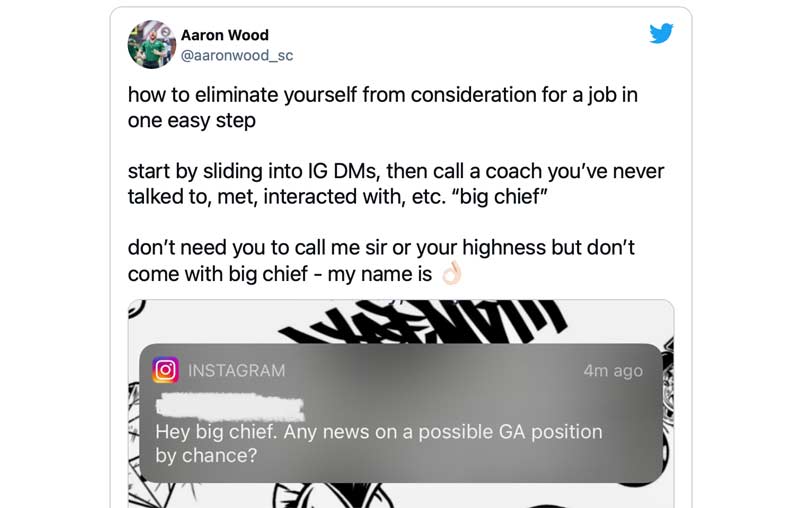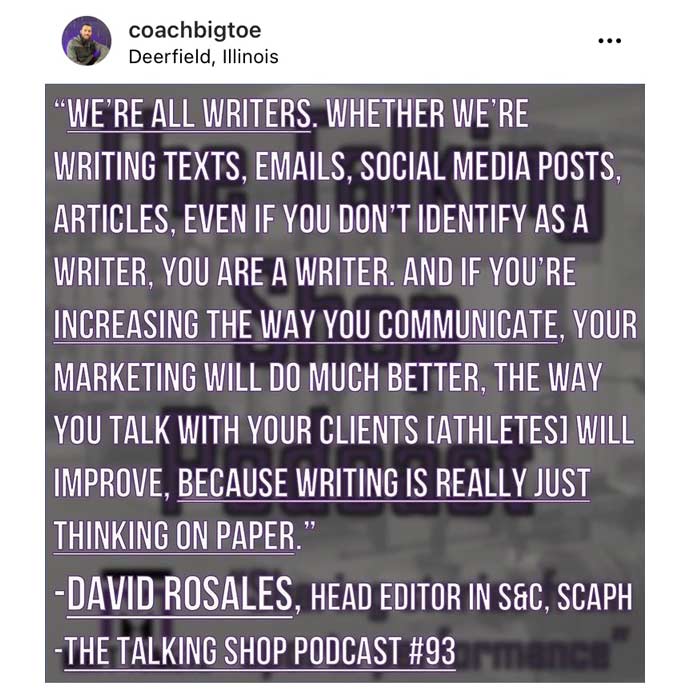A young trainer grew dissatisfied. The gym he worked at was moving in a direction he didn’t agree with and he became more and more unfulfilled at work with each passing day. Plus, his family was growing and he needed more income than his employer could provide to sustain his family’s modest lifestyle.
He considered options. Having family-first priorities, uprooting and leaving town wasn’t on the table. Working at a competing gym? That wasn’t a better option than where he already worked. Starting his own business? That didn’t feel wise or realistic.
He felt trapped.
The very thought of changing careers made his stomach churn: he’d poured his heart into training—it was his passion, his hobby, and his profession. And yet his family was more important, so he job shadowed and interviewed for positions outside of the performance and fitness realms.
None of it felt right, but the jobs paid the bills. He’d have done anything to protect his kids, including changing careers, but it would’ve come at a price: a piece of his soul. Then, he caught wind of a sports performance-based physical therapy clinic opening in town. He knew the owner of the PT practice and got in touch.
The only problem? The owner wasn’t looking to hire a trainer.
But he did welcome someone he could trust to build the business while he wasn’t in the building—someone who would carry the torch in the right direction, a leader who could help turn a beautiful but empty building into a bustling, healing, and athletic development environment.
He was looking for someone who thought like him: a business owner.
I fit that bill, and that wasn’t by accident.
Being an Asset
I’ve made diligent study of seven areas that helped transform me from “just a trainer” to an asset for any business:
- Leadership
- Business Development
- Sales
- Copywriting
- Marketing
- Communication: Verbal and Written
- Management
As a result of these skill sets (all of which have nothing to do with training), I was able to negotiate a salaried position that paid significantly more than what I was previously making. I have benefits (including a healthy retirement match), my income supports my family, I make breakfast for my kids every morning and tuck them in every night, I’ve played an instrumental role in building an amazing business that does great work for the community, and I didn’t have to sell my soul and become a person who looks forward to Friday just to make ends meet.
When God opened the door, I didn’t have to get ready. I was prepared to walk through it. Are you preparing yourself to walk through the right doors?
Are you preparing yourself to walk through the right doors? @KD_KyleDavey Share on X
Pro or Bust
Most trainers get into this business at a young age with aspirations of working in professional or Division 1 sports. The allure is understandable: you want to work with the best, share in their limelight, and—although we know in our hearts this isn’t true—the illusion that working with the best makes us the best is a captivating one.
As a young buck with nothing but time (and student loans), it’s no problem to pick up and move across the country to work for pennies (or nothing—what we in the United States call an internship). After you’ve got that experience on your resume, you might even land your first job and make $30-40k per year.
Living the dream, baby.
Division 1 or professional sports. Drive right up to the plane, no security. Wi-Fi on the whole flight. Hotels. Fans. TV. The whole nine. But along the way, you have to ask yourself what are my values in life? What brings me joy, fulfillment, and meaning? Does my career path align with those values? Do I want a family? If so, does my current role provide the time, income, and benefits necessary to meet my vision for family life?
And, perhaps most importantly: what is my purpose?
Without clarity in these domains, you will never find happiness or fulfillment. I’m not discounting the idea of working at a high level; rather, I’m pointing out that arbitrarily making that your goal is superficial and will not result in fulfillment. Just like money doesn’t equal happiness, D1 or pro sports doesn’t guarantee it either.
Just like money doesn’t equal happiness, D1 or pro sports doesn’t guarantee it either, says @KD_KyleDavey. Share on XThe private sector can afford you a more compatible lifestyle, but whether you choose to open your business or work as an employee, you have to earn and be worth it. That’s got very little to do with training skill and very much to do with how you can impact a business.
Harsh Realities of the Private Sector
Let’s get this out of the way first: status as an ex-D1 or pro sports strength coach (or player) is NOT enough to land you a dream job in the private sector.
Thinking about starting your own business? I won’t discourage you from doing so, but I will caution you to familiarize yourself with the realities of running a business. If you think talent as a strength coach is predictive of running a successful strength and conditioning business, you are in for a rude awakening. Stretch shortening cycles and velocity-based training don’t pay the bills. We must know these and other concepts to deliver on the promises we make when selling our services, but the reality is that understanding S&C is not a prerequisite for landing sales, filling your schedule, and making money.

Isn’t Business Ownership the Dream?
Business owners often work 12-16 hour days, 5-7 days per week. This is especially true for relatively young businesses (under three years old or so). Further, sometimes owners go without a paycheck for several of the first months of business. Even further, there is typically a significant financial risk involved with starting a business. Someone has to pay for the space and equipment, and that someone is you.
If you’re the entrepreneurial type, by all means, dive in. However, starting a business isn’t a journey everyone wants to take. If you’re someone who loves S&C but doesn’t care to run a business, working as an employee may be a better fit.
I reject the notion that owning your own gym is the “next step” and pinnacle of working in our sphere. If you choose (or have chosen) to start your own show, that’s fantastic. But there is absolutely nothing wrong with finding meaningful, fulfilling work as an employee, doing a damn good job, being appreciated, and getting paid well for it.
I reject the notion that owning your own gym is the “next step” and pinnacle of working in our sphere, says @KD_KyleDavey. Share on XGood business owners have established a strong vision. They know what they want to accomplish and what impact they want to make in the community and on the world.
In my opinion, the greatest opportunity to be successful lies in aligning your work with your personal values and vision. As an employee, that means finding a business whose values and vision you share. If you do, it will be easy to buy in 100% and pour your heart into your work and company.
That gives you potential to become indispensable. But heart alone won’t get you there—you need heart and a skill set.
Becoming Indispensable
While big businesses can afford specialists, small businesses—like most S&C operations—often cannot. A jack of all trades thus provides tremendous value. I’ve identified seven skills that will transform you from a “trainer” to someone who will be indispensable in any strength and conditioning or fitness business.
The goal isn’t to become an expert in any one of these areas; instead, you want to be like a heptathlete, above average in each. You’ll notice not one of these categories is training related—we need to be good at that function of our job, of course. But the reality is that being a good trainer is not a prerequisite for running a successful training business.
1. Leadership
A leader is someone who influences the emotions and behaviors of others. Simon Sinek describes leaders as those who “draw people into a circle of trust” and who make their employees feel safe. What Sinek means is that leaders remove unnecessary fear and tension from the workplace, allowing everyone to be fully comfortable and do their best work.
Easier said than done.
Sinek’s book, Start with Why, details the underlying principle he believes unites people in business. In his own words: “people don’t buy what you do, they buy why you do it.”
Compare these two sentiments:
- I train athletes to be as fast and explosive on the field as possible.
- When I was a kid, sports were the only thing that got me through. They taught me how to push myself beyond what I thought was possible, and I’ve carried that lesson my whole life. Now, I want to give back and do my part to teach kids that they can achieve more than they ever thought possible.
People don’t care what you do, they care why you do it. Staff members will work harder and be more motivated if the business has a strong “why.” Community members will be more supportive and potential clients more likely to purchase services as a result.
People don’t care what you do, they care why you do it, says @KD_KyleDavey. Share on XIn short: you’ll make more money and have a better time doing it.
Another of Sinek’s works, Leaders Eat Last, is more of a how-to guide that provides real-life examples of leadership at work, giving big picture strategies as well as practical advice on how to become a more effective leader for your team. As you can imagine from the title, taking care of those around you is a critical element of effective leadership.
A coworker recently mentioned that people notice the energy I bring to work. I smile and say hello to nearly everyone. I go out of my way to make conversation and introduce myself to people. And I make it a point to walk around the building and ask “How are you?” to each of my coworkers, first thing, every morning (which one of them eventually admitted was annoying at first, until he realized I actually cared about his response).
Some may call this habit “wasting time”—on the contrary, it is creating an atmosphere for success.
“You probably don’t know it, but those little things go a long way,” is feedback I’ve received.
I do know it. That’s why I do it.
2. Business Development
You probably have a sense of how to assess and progress an athlete—do you also have a sense of how to assess and progress a business?
- Does the business have a strong employee culture?
- Is the client experience amazing?
- Is the process from I’m curious about this place to I’m now in the building as easy and seamless as possible for potential clients?
- Are there systems in place to ensure that the business won’t crumble if an employee calls out sick or quits unexpectedly?
Good to Great by Jim Collins is widely regarded as one of greatest business books ever written. Collins analyzed businesses whose stock returns beat the general stock market by an average of seven times for 15 straight years. In other words, he analyzed businesses that did exceedingly well (in terms of money earned) for at least 15 years in a row.

The book pinpoints several commonalities between these companies. What they did, and what their competitors did not do, is what helped them take the leap from a good company to a great one. A few key elements for a company to become great were:
- Strong leadership.
- A laser-like focus on a few clear goals.
- A culture of discipline.
After reading this book while on a vacation, I came back re-energized and with a new gameplan. Following five straight months of generating lower revenues than the previous month, my team turned a corner and broke the streak. Our revenues then increased for six straight months, setting company records along the way.
All I did differently was apply the lessons learned in Good to Great. Namely, I identified each of our team member’s why, created a common goal that encapsulated each of them, and rallied our team around that goal. The vibe in the office shifted, we recommitted to our purpose and work, and the money flowed from there.
Another worthwhile read, Never Lose a Customer Again, forces you to face the reality that you probably aren’t knocking your clients’ socks off. Businesses that create fans and treat their customers amazingly are more successful than those that take a more traditional, transactional approach. Exceeding expectations and delivering a little bit of shock and awe will keep clients around longer and generate new clients faster.
Exceeding expectations and delivering a little bit of shock and awe will keep clients around longer and generate new clients faster, says @KD_KyleDavey. Share on XPeople talk. Fewer clients cancelling training and more clients signing up = money in the pocket.
Never Lose a Customer Again provides a step-by-step guide designed to help you assess the client experience you deliver. Then it teaches you how to make it better. Two other amazing resources are Grit, by Angela Duckworth, and The E-Myth Revisited, by Michael Gerber.
Running a business isn’t for the faint of heart. In Grit, Duckworth defines exactly what grit is and then gives you the tools necessary to develop it so you may be successful in the long run.
She teaches how to get up after getting kicked in the face over and over and over again.
The E-Myth Revisited defines the difference between working in your business and working on your business. Many entrepreneurs make the assumption that being a good technician (for us, being a trainer) means they can run a successful business. As discussed earlier, that’s not the case. Gerber discusses the evolution of a business, how to avoid common-yet-fatal pitfalls, and how to think big, like a leader and manager should.
Lastly, Pete Dupuis, co-owner of Cressey Sports Performance, puts out an excellent newsletter once per week in which he shares the four most valuable pieces of content he’s consumed during the week. Pete is not a trainer, he’s a business guy who runs a highly successful training facility, and his insights are both practical and relatable.
3. Sales
Sales are both an art and a science, much like training. A gifted salesperson is an excellent conversationalist and an asset to any company. The most obvious link is to selling services or products, but the value does not stop there.
Any time you represent your business, you are essentially in a sales scenario. Giving a tour to a local sports club, presenting at a rotary meeting, or talking with a parent before or after a game are all opportunities to, well, sell yourself.
The better you are at this, the more value you bring to your company. The word salesman carries a negative connotation for many people: a sleazy guy trying to coax you into buying a crappy car for more than it’s worth (and with a high interest rate to boot).
But that’s not what sales is. Sales is simple problem solving.
If you have a problem and I have a solution for that problem, let’s do business together. If not, let’s not. To find out if we fit each other’s needs, let’s have a conversation about it. That’s all sales is. It’s helping people who want and need your help.
I’ve read a lot of sales guides, and the absolute best I’ve encountered is SPIN Selling by Neil Rackman. Rackman is a scientist who spent his career studying successful salesmen. He discovered the best are excellent listeners: they read between the lines, ask great questions, and understand what someone is trying to say but can’t quite articulate. Through simple, non-confrontational conversation, they learn where their product would benefit the customer (what problems it solves), and they help the customer realize the same.
The best rarely have to “close the sale”—instead, the customer usually asks how to sign up. These successful salesmen ask four types of questions (in order, hence the acronym SPIN):
- Situation questions.
- Problem questions.
- Implication questions.
- Need payoff questions.
These questions move the customer from “here is my situation” to “yes, that is a problem” to “wow, you’re right, that is a really big problem” to “yes, I definitely need to solve that problem. Can you help me with that?”
Once there, if your product delivers a solution, the sale becomes the logical next step.
4. Copywriting
Copywriting is essentially sales, but over a written medium such as email, a web page, or social media. Copywriting is much, much more challenging than in-person sales because you aren’t actively talking to someone. Instead, they’re reading words you’ve written. You don’t get to ask questions and read their tone. It’s a one-way conversation, and you have to be right on the money to be successful.
Copywriting is very powerful when executed well. Good copy grabs the reader’s attention and directs him or her down the desired path: subscribing to a newsletter, clicking a link to go to another webpage, following a social media account, or making a purchase.
Good copy grabs the reader’s attention and directs him or her down the desired path, says @KD_KyleDavey. Share on XBad copy doesn’t get read beyond the first few words and results in nothing but the browser closing. Being a decent copywriter puts you miles ahead of not even knowing what copywriting is. You may not land a million-dollar gig writing an email campaign (yes, such jobs exist), but with just basic copywriting skills, the engagement on your IG content will go up and your website will receive more “contact me” requests from prospective clients.
If you’re an absolute beginner, a good place to start is Why Do You Hate Money by Joey Percia. Percia is a trainer-turned-copywriter, and his book is written specifically for fitness and performance professionals. Percia teaches formulas for writing headlines that draw the reader in, tips and tricks of writing the type of copy that keeps the reader’s attention, and some technical skills (like creating effective sales funnels and email marketing campaigns).
For a more in-depth and advanced look at writing effective copy, The Ultimate Sales Letter by Dan Kennedy is a phenomenal tool. Kennedy is a copywriting and marketing legend. His track record of writing highly effective copy—meaning, composing paragraphs that result in people sending money to other people—speaks for itself. He’s also mentored hundreds of copywriters who became great. He knows what he’s doing and how to teach it to others.
Understanding the basic principles of writing effective copy makes you the clear go-to for marketing and effectively running social media platforms and online sales campaigns for your company.
5. Marketing
Marketing is an umbrella term that encapsulates every aspect of a company’s outward appearance, from social media presence to the logo to t-shirt design to the website appearance, etc.
One of my favorite marketing books is Magnetic Marketing by Dan Kennedy (author of The Ultimate Sales Letter). The premise of Magnetic Marketing is that if you have a clear understanding of who your target audience is, what pains and what motivates them—and, how you can help—then you can establish marketing materials which speak directly to these people and attract them to your business.
Hence, you need not market to everyone. You probably don’t want to do business with everyone, anyway. Instead, figure out exactly who you do want to serve, what they feel, want, and need, and then speak to them directly in your marketing materials.
Magnetic Marketing walks you through this process.
For free, highly practical tips, I’ve greatly enjoyed www.marketingexamples.com (which I discovered from the Pete Dupuis newsletter). If you sign up for the newsletter, the first five emails cover specific topics, like how to design an effective sales page, and tips for writing more effective copy.
A great resource that is specific to fitness is The Wealthy Fit Pro’s Guide To Getting Clients and Referrals by Jon Goodman and Mike Doehla. Early in Goodman’s career as a personal trainer, he recognized that most of us in fitness are pretty terrible at all things business. He founded the Personal Trainer Development Center and has since taken it upon himself to empower trainers with the business and marketing savvy necessary to financial success.
Split into three sections, the book is business and marketing 101 specifically for those of us in the fitness and performance realm:
- “How to Get More People to Buy From You”
- “50 Proven Ways to Get More Clients”
- “How to Get More Referrals”
Brilliant marketers also have a firm understanding of human psychology. Knowing a bit about what does and does not make people tick provides a grasp on the underlying principles of human behavior. There are more books on psychology and behavior than anyone can read, but an absolute game changer for me was Influence: The Psychology of Persuasion, by Robert Cialdini.
Cialdini, a psychology professor and acclaimed sales coach and marketing consultant, teaches what he calls the six universal principles of influence, and how you can use them to influence others.
Would you ever agree to put a freeway billboard in your front yard to promote safe driving? You’d be shocked to hear over 90% of folks asked said yes, they indeed would put a freeway sized billboard in their front yard, because they had been subtly buttered up to the idea over the course of a few weeks.
If this sounds crazy, it’s because it is. Who in their right mind would agree to a billboard that says “drive safe” in their front yard? When the right psychological tools were in play, it became an obvious choice for them. This is what brilliant marketers do: they set the right psychological tools in place to make their business the obvious choice. Influence will teach you these tools and how to use them to drive clients your way.
Brilliant marketers set the right psychological tools in place to make their business the obvious choice, says @KD_KyleDavey. Share on X6. Communication: Verbal and Written
Effective communication is the ability to understand others, be understood, develop deep relationships, and influence actions and behaviors. Poor communication means you have little influence over the way people think and feel and are thus less effective in achieving any desired outcome.
Poor communication means you have little influence over the way people think and feel and are thus less effective in achieving any desired outcome, says @KD_KyleDavey. Share on X
Strong communicators make very effective leaders. Obtaining buy-in from staff members and clients alike is critical to achieve business and training success.
Communication is how you get it.
The book Just Listen radically changed my life: it’s made me a stronger husband, father, son, manager, employee, and leader. The book teaches you how to deeply connect with people so that they trust, respect, and like you. As the title implies, closing your mouth and listening to others is the first step. By doing so you allow the other person to feel understood, which is a building block for bonding and developing a strong relationship.
Without feeling understood, behavior is unlikely to change, whether it’s a marital spat or a poor habit at work. Hence, listening is a critical skill for effectively communicating and eliciting behavioral change.
I would be remiss not to mention perhaps the most famous book on communication, How to Win Friends and Influence People. The timeless advice given is easily digestible, highly practical, and quickly applicable. From simple suggestions, like smile more, to deeper concepts, like asking questions that entice others to open up to you, this book is full of advice.
Conscious Coaching by Bret Bartholomew is another great resource specific to S&C. The book is specifically written about connecting better with athletes, but the general skills he teaches are equally applicable to everyone you interact with. Bartholomew identifies several different types of athletes (from easygoing to entitled to hard-working to lazy) and lays out how to connect with each. These personality archetypes also exist in our employees and other co-workers, so knowing how to positively interact with them is valuable.

Communication via a written medium is part of daily life for us: text, email, social media, etc. Possessing strong writing skills effectively conveys your intelligence and helps you better express yourself.
Elements of Style by William Strunk teaches you how to let your own voice come through in your writing. It also touches on some technical concepts, like best uses of semicolons and commas, but it’s mostly written to teach the reader how to confidently express him or herself via writing.
7. Management
In my opinion, management is really just a combination of leadership and communication. Anybody can learn to make schedules or crunch numbers in a budget. That’s not what management is about. Management is about motivating a crew of people to do their best work so the business thrives. Thus, the manager’s dilemma is to increase employee satisfaction (so employees are happy and stick around) and create a culture of excellence.
Management is about motivating a crew of people to do their best work so the business thrives, says@KD_KyleDavey. Share on XFirst, Break all the Rules: What the World’s Greatest Managers do Differently is the culmination of over 80,000 interviews conducted by the Gallup Organization. They narrowed down what effective managers do and do not do. Some of the key concepts include treating every employee like an individual, focusing on enhancing strengths vs. improving weaknesses, and measuring and rewarding desired outcomes.
Sounds basic, but when executed well, these tenets have profound organizational effects. They keep employees happy, engaged, and motivated, which is a key part of the recipe for business success.
Effectively managing people is essential for smooth business operations and is a highly sought after skill. Being a strong manager makes you a more attractive candidate in the job marketplace.
Go, Do, Be
The most successful businesses have great cultures and happy employees, are led by strong leaders, and have fantastic sales and marketing systems that drive customers toward the business.
If you possess each of these qualities and skill sets, you bring tremendous value to the workplace. You put yourself in a position to demand and deserve a great salary—especially if you also deliver training such that you offset the cost of your own salary.
No savvy employer wouldn’t at least consider such an employee. A jack of all trades is what small businesses need, and if you become that jack you are indispensable.
Become indispensable and create your dream job and dream life.
Since you’re here…
…we have a small favor to ask. More people are reading SimpliFaster than ever, and each week we bring you compelling content from coaches, sport scientists, and physiotherapists who are devoted to building better athletes. Please take a moment to share the articles on social media, engage the authors with questions and comments below, and link to articles when appropriate if you have a blog or participate on forums of related topics. — SF





